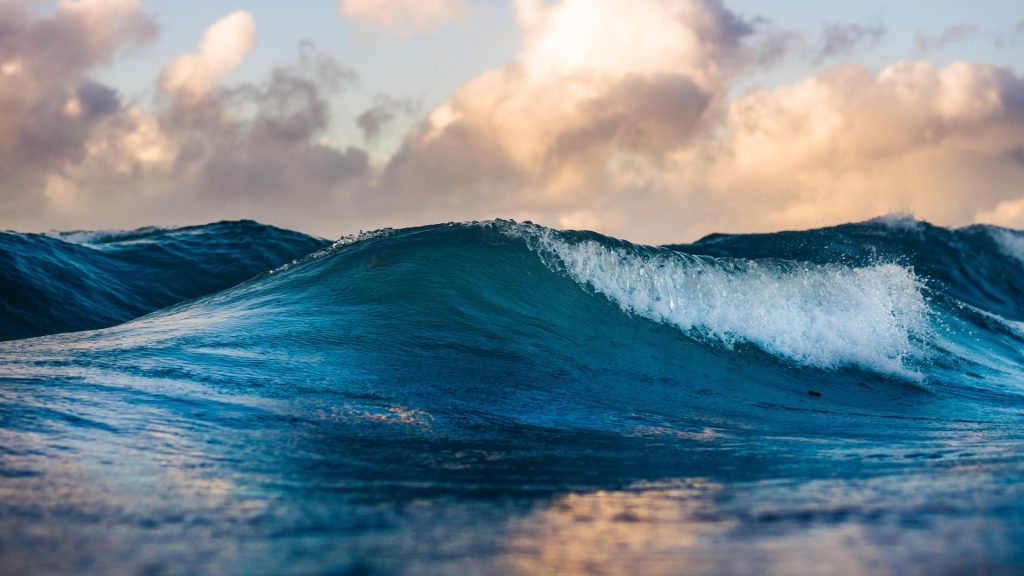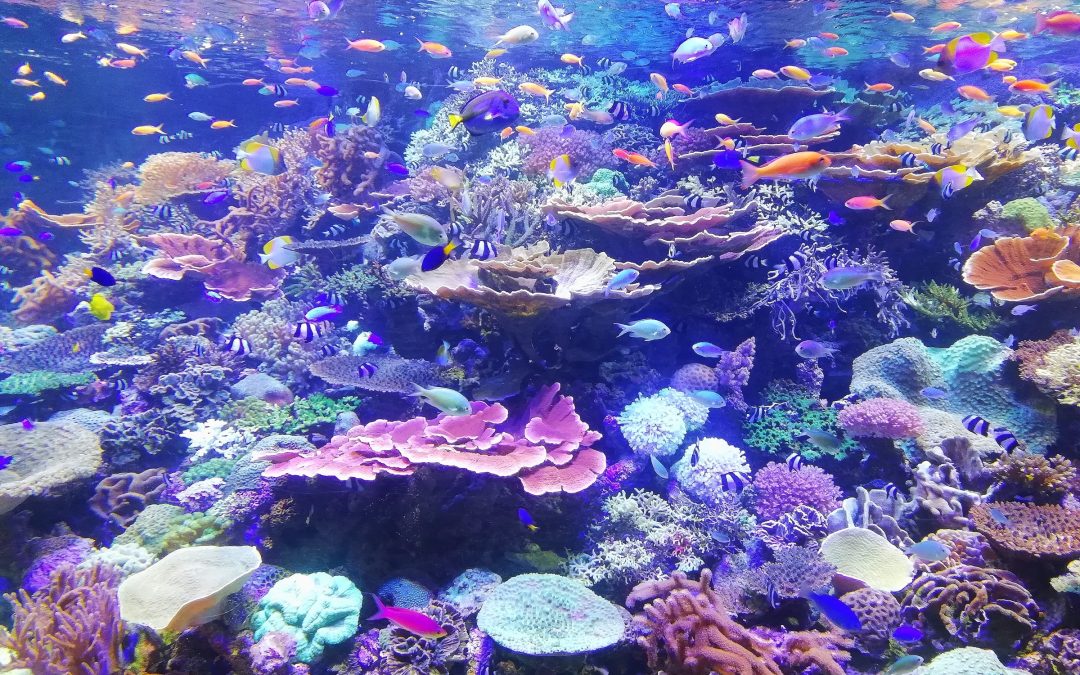Editor’s Note: Earlier this year, UN delegates reached an agreement on conservation of marine life on international waters. The agreement, reached after two decades of negotiations, claims it will protect 30 percent of the world’s oceans from biodiversity loss by 2030. It has been hailed as a “breakthrough” by Secretary-General António Guterres. Mainstream environmental organizations have followed suit. These two articles by DGR members question these claims. They explore what the treaty actually says. The article is followed by the invitation to a demonstration against Deep Sea Mining in London on May 3 and 4.
- “The UN High Seas Treaty” by Jolene
- “What They Aren’t Telling You About the High Seas Treaty” by Julia Barnes
The UN High Seas Treaty
By Jolene
Scrolling through a bright green Facebook page a few weeks ago I saw this headline: “More Than 190 Countries Agree On A Treaty to Protect Marine Life.” Sounds good, but is it really? I wonder if anyone who saw that post actually read and researched the story before reacting to it with likes and hearts and enthusiastic comments.
The article said that The United Nations High Seas Treaty aims to protect 30% of the world’s ocean from biodiversity loss by 2030. My first thought was, why only 30%? My second thought was, There’s got to be something more to this treaty than is being told to us in the article. And there is.
First, let’s look at who is allowed to use ocean resources.
Although the ocean body of water can be used by anyone, the ocean seabed belongs to the coastal state, which is 12 nautical miles from the coast. A nautical mile is a little over a land mile. Each state also has an exclusive economic zone which is 200 nautical miles from its coast. A nation has the right to use the resources in this zone. Beyond the 200 nautical miles is considered international waters — the high seas — which can be used by anyone. The new treaty is supposed to regulate the use of international waters.
Right now, all nations are allowed to lay submarine cables and pipelines along the floor bed of the high seas. That seems destructive enough, but now the UN High Seas Treaty, that is supposed to protect marine life, is going to allow deep sea mining to be exempt from environmental impact assessment (EIA) measures.
Deep sea mining is one of the most destructive activities that can be done to the ocean sea bed. The push for this mining is being driven by an increase in demand for minerals to make so-called renewable energy. More and more of the earth’s land is being mined for these minerals, and the mining industry is now looking to the ocean to continue the destruction.
The land and sea should not be owned by anyone, but as we can see, the most powerful people in this industrial society are just taking what they want. Mining destroys land bases, and now deep sea mining is being added to the destruction of the planet. Whenever governments get together to do something “good,” be very skeptical. It’s usually being done for the good of companies, not the planet.

Ocean Waves by Silas Baisch via Unsplash
What they aren’t telling you about the High Seas Treaty
By Julia Barnes
When the High Seas Treaty was announced, conservation groups applauded and social media was abuzz with celebration. The media portrayed it as a long-awaited victory. Commentators claimed that it meant 30% of the ocean would be protected by 2030, that deep sea mining would face strict regulations, and biodiversity would be safeguarded.
The draft text is easily accessible online. It’s a 54-page document, dry and tedious, but clear enough that any lay person should be able to comprehend its meaning.
That is why it is so unforgivable that the treaty has been misrepresented the way it has.
The High Seas Treaty does not guarantee that 30% of the ocean will be protected. It makes no commitment to a percentage, sets no targets. It merely lays out the regulatory framework under which it would be possible to create marine protected areas on the high seas.
When you think of a protected area, you’re likely imagining a place that is off limits to exploitation, where industrial activities are banned.
Under the High Seas Treaty, a protected area is one that is “managed” and “may allow, where appropriate, sustainable use provided it is consistent with the conservation objectives.”
I do not believe that humans possess the wisdom to manage the ocean, nor would we ever be capable of doing a better job than the ocean does itself, with its billions of years of intelligence.
Our track record with managing fisheries should cast serious doubts about our ability to assess sustainability. We must remember that there is no surplus in nature. When something is taken out, even at a rate that is “sustainable,” nutrients are permanently removed from the ecosystem. This cannot happen without consequences.
Even though “protected” might not mean what we expect it to, let’s assume for a moment that an area managed for “sustainable use” is in better shape than one left “unprotected.” Next, we run into the problem of enforcement.
Illegal fishing is rampant, with 40% of fishing boats in the world operating illegally. Marine protected areas are routine victims of poaching. Unless they deploy a navy to patrol the protected areas on the high seas, it is likely these will only be paper parks.
But all this presumes that marine protected areas will, in fact, be created. The process laid out in the treaty makes this quite difficult. With 193 signatory countries, decisions on the creation of marine protected areas are by consensus, and failing that, will require a two-thirds majority vote.
Proposals for new marine protected areas must undergo a review by a scientific and technical body, then consultation with “all relevant stakeholders,” after which the submitting party will be asked to revise the proposal.
Next, there is a 120-day review period. If another party objects to the establishment of a marine protected area within that time frame, the objecting party will be exempted from the marine protected area.
The review period also leaves time for industries to exploit the proposed area before protection is in place. We’ve seen this happen on land when logging companies targeted soon-to-be-protected forests, cutting as many trees as they could before the protection was granted. It’s not hard to imagine something similar taking place on the high seas, with a proposed area being fished intensively during the 120-day period.
What commentators often ignore is that a large portion of the treaty is dedicated to something called “marine genetic resources” and deals with how to share the “benefits” gained from commodifying the genetic material of marine organisms for use in things like pharmaceuticals.
Conservation groups have falsely claimed that the High Seas Treaty puts limits on deep sea mining, when in fact it does not. Deep sea mining is even exempted from environmental impact assessment measures.
The High Seas Treaty may have been a diplomatic feat, but as is often the case when negotiating with so many parties, to achieve agreement, the text ends up watered down and toothless.
This comes as no surprise. What is disheartening is seeing the way news media and NGOs consistently misrepresent the treaty. For a while, the internet exploded with erroneous claims that 30% protection had been achieved, that the ocean had scored a massive victory.
Meanwhile, the deep sea mining industry is gearing up to begin the largest and most destructive project ever imagined on the high seas, and few people have heard of it.
We have an illusion of protection masking a new era of exploitation.
Demonstration: Say No to Deep Sea Mining!
The International Forum for Deep Sea Mining Professionals will be holding their 11th Annual Deep Sea Mining Summit 2023 in London on May 3rd and 4th.
They have been very secretive about the exact location. Which is understandable considering the destructive nature of this profession. But we have found out where it will be held and we need to have an opposition demonstration there. Everyone and anyone in and around London who is against mining the deep sea should come with signs and solidarity. We have set a time and date to show up but feel free to come express your views anytime during the summit. On May 4th at 1pm BST in front of the London Marriott Hotel Canary Wharf 22 Hertsmere Road defend the deep sea!
Species extinction is considered a “likely outcome” of deep sea mining. This new extractive industry threatens not only the fragile seabed, but all levels of the ocean. Mining would produce plumes of sediment wastewater that spread for 100s of kilometers, suffocating the fish who swim throught them.
We have an opportunity to stop this industry before it begins, but we are running out of time. As soon as this July, commercial mining may begin, opening an area of the ocean as wide as North America to exploitation.
We want to show that there is widespread support for a ban on deep sea mining.
We also want to highlight the incredible biodiversity that is threatened, so we are encouraging people to come dressed as their favorite ocean creatures. Don’t let them think your silence means consent.
The Facebook page for this event is here.
Sponsored by Deep Sea Defenders



Thanks for the articles! A big heads-up for stopping the fool spectrum wetiko mining.